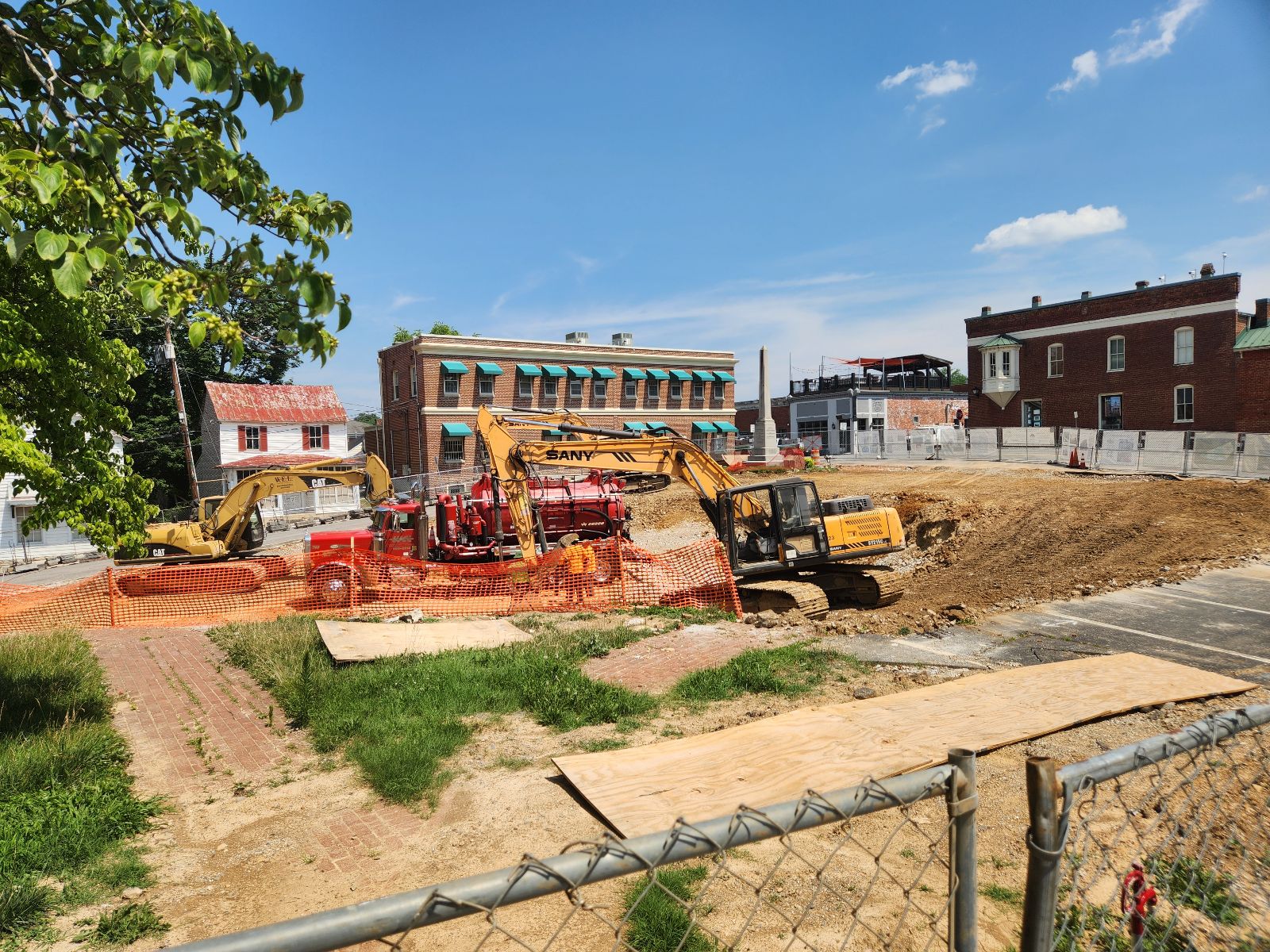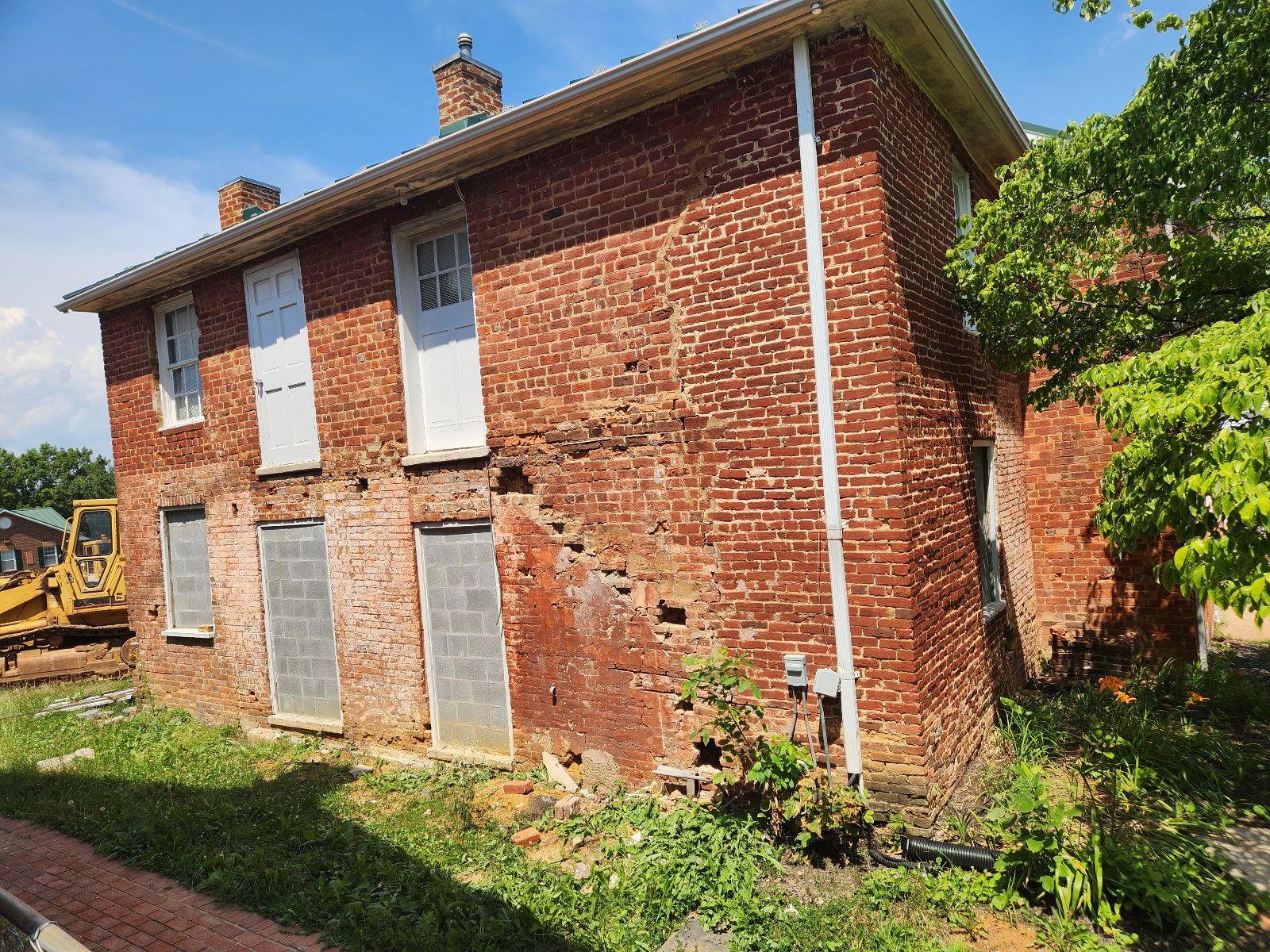Fincastle Mayor Mary Bess Smith, among others in town, was taken by surprise last week when the Botetourt County Board of Supervisors was told by project managers that relocating a historic building would no longer be possible, and that the building would be demolished.
Discussions are underway to decide what will happen to the early-19th century Museum Building in Fincastle, just a couple of dozen feet from the site of the old county courthouse and in the way of construction to build a new courthouse.
Multiple 1800s-era buildings surround the courthouse site, including the Museum Building, which once housed the law office of James Breckenridge, a veteran of the Revolutionary War and War of 1812, a member of the Virginia House of Delegates and a U.S. congressman.
Fincastle is now working to protect the Museum Building from being demolished during the rebuilding of the county’s courthouse.

Botetourt County quickly switched gears from a plan to move the Museum Building, to demolishing it
The county began planning for a new courthouse a few years ago. The most recent courthouse, which was built in the 1970s after a fire destroyed the original structure, was concrete, which former Botetourt County Circuit Judge Malfourd “Bo” Trumbo said doesn’t work well with modern wiring and Wi-Fi systems. A modern courthouse also requires more square feet to house metal detectors and other security measures.
Smith, the mayor, said the sprinkler system in the courthouse, which was installed above the insulation, froze and burst one winter, drenching the inside of the building. Moisture seeped into the concrete walls, creating black mold. The courthouse was also built before the Americans with Disabilities Act was passed and so didn’t comply with all of its requirements. The county recently demolished the old structure and is preparing to erect a new courthouse on the same site.
The Museum Building, which sits just a couple dozen feet from the courthouse, is in the way of construction.
Originally, the plan was to relocate the building — an idea that “created a lot of excitement and hype,” Smith said.
But during the Tuesday board of supervisors meeting, the board was informed by Rich Evans, the project manager, that this wouldn’t be feasible — comparing the relocation to “moving a sandcastle.”
Because the building has four eras of construction within its walls after multiple renovations, certain sections of the building are settling faster than others, he said. And in some places, the brick has been reduced to dried mud due to moisture exposure over hundreds of years. These issues were unearthed once work began to remove the floors and the patio from the building in preparation for its move.
“When you have an unstable width of brick throughout the wall, it becomes highly unreliable to take anything and move it,” Paul Whitney, the project’s on-site superintendent, said in a video that was shown to the board during the meeting.
The board was told that no action was needed at the time, and that the project team would move forward with demolition, with the intention to preserve as much as it could of the building.
The news came as a “shock” to the town of Fincastle, Smith said.
The town started raising red flags. According to a town demolition ordinance, historic buildings — or any built prior to 1900 — may not be torn down without the issuance of a permit by the town planning commission.
David Moorman, the deputy county administrator, said Friday that the county is working with a historic advisory group on options for “preserving history associated with the building.”
“Our understanding is even if the building could be moved and survive the move, that once it was in place, it would have to be virtually rebuilt,” Moorman said. “There’s so little brick that is preserveable in the building, that most of it would have to be reconstructed with new brick, and the result would no longer be a historic building.”
Kathleen Wright, Fincastle’s town attorney, said the county is in the process of obtaining the needed permits. “In the meantime,” she said, “I think a lot of the advocates for the building are hoping there will be some way the county and the historical society and other stakeholders will be able to come up with some way to memorialize that very important building.” 
Fincastle’s historical significance, and where this building fits in
Fincastle itself, aside from its pre-revolutionary buildings, is a piece of history. Formed in 1772, the town was the municipal hub for a county that once stretched to the Mississippi River.
The Museum Building housed the Botetourt Historical Society and the Botetourt County Museum up until three years ago.
At one point early in the building’s history, one room of the brick building housed Breckenridge’s law office.
Breckenridge, who opposed declaring war on Britain in 1812, led Virginia militiamen from Richmond to Washington and Baltimore during the Revolutionary War, according to Encyclopedia Virginia. He owned about 4,000 acres of land by the early 1800s, with multiple properties built by his slaves. He died in 1833.
The building Breckenridge worked in, once expanded, served as part of the Western Hotel Complex in the 1840s and 1850s, when Fincastle was known as a “stage coach shop,” Trumbo said, and was a “frontier stop-off” for those traveling West. The hotel was complete with a tavern and horse stables, said Lynsey Allie, executive director of the Botetourt County Historical Society.
In the 1930s, Allie said, the Dodd family converted the building into apartments, which lasted until the 1950s when the county took ownership of the building. The historical society moved out once conversations about replacing the courthouse began.
“Fincastle was around before the United States,” Allie said. “There’s so much history there, and so many things have been lost over time. … So I hate to lose a piece of that history.”
He said the community has tried, and succeeded, in saving this building for 150 years — “and now there’s a decision made by whoever that it’s not worth it.” He said the decision-making process warrants further explanation in this case.
“It really tells a magnificent story,” Trumbo said of the Museum Building.
Smith said she, the chairman of the historic society and a few others will meet with board of supervisors members and county staff Monday morning to discuss the building’s future.



